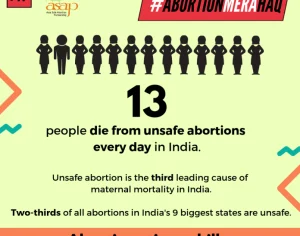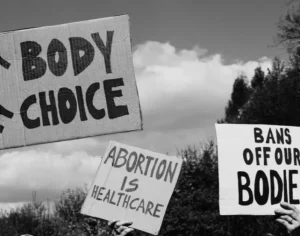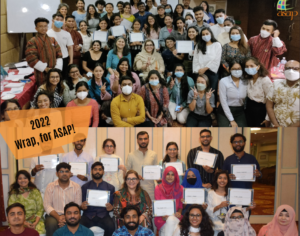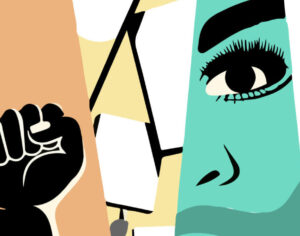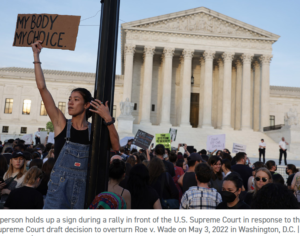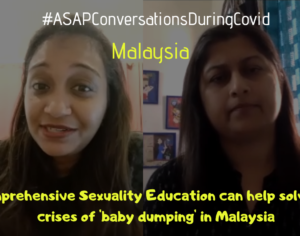Abortion: At the Nexus of Tradition and Modern Views
There are several excellent pro-choice images on Facebook. But here is one that stood out to me.
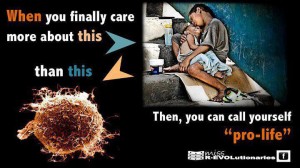 When you look at the image, it is a little hard to believe the “pro-life” (more appropriately, anti-choice) hullaballoo. Seriously, you can’t think that the little ball of cells is more valuable than living children or women? And yet an anti-choice, anti-abortion movement continues to sweep around the globe.
When you look at the image, it is a little hard to believe the “pro-life” (more appropriately, anti-choice) hullaballoo. Seriously, you can’t think that the little ball of cells is more valuable than living children or women? And yet an anti-choice, anti-abortion movement continues to sweep around the globe.
At the crux of this debate is a semantic clash between old assumptions of life and new knowledge. Religious writing does not always separate the fetus from life, and this ambiguity has allowed the anti-choice movement to label itself “pro-life”. But academic advancements call for a change in perspective. We now know that while the fetus has the potential to evolve into a human being, it is not a self-sustaining life form. A pregnant woman’s body undergoes serious changes, and mental health issues also arise during and after pregnancy. Pregnancy can also cause a woman’s death in so many ways. Feminist perspectives show what we all know to be true – all women do not always want to be mothers. Also, it is only when women’s fertility is not controlled that they can reclaim their spaces in society as political and economic equals of men. Public health studies, ethnographic works, and population studies show that maternal deaths can be cut down by at least 13% if safe abortion services are made easily accessible worldwide. In the light of all this new knowledge, the prochoice movement demands that the woman have autonomy over her body. And by doing so, the movement chooses to value her life more than that of a potential life, the fetus.
But not everyone has taken a steadfast stance on these issues. And among those who struggle between these traditional ideas, and more recent feminist perspectives are patients in need of an abortion, and their caregivers.
Dr. Phan Bich Thuy, ASAP Steering Committee member from Vietnam addresses this mêlée of emotions on her blog (http://bichthuyhn.blogtiengviet.net/), and attempts to understand the stigma and guilt fueled by these traditional notions of life. As a caregiver herself and as a researcher, she has met several women who have had no option but to abort their pregnancies. All at once, they feel relieved and guilty. The same, she says could be said of caregivers, who “are torn between traditional beliefs and professional responsibilities.”
While anti-choice elements might want to use this guilt to their benefit, and milk people for stories of regret, Dr. Thuy appeals to her readers to be sensitive, and to view these issues from the perspectives of the patients and caregivers. While these patients are driven by social injustice, poverty, lack of access to information and services and a desperation to regain control to make these decisions, caregivers are motivated by a sense of social justice, public health and professionalism. She says that it is unfair to think of either of them as cruel or ruthless.
Dr.Thuy’s words echo in the work of the “pro-voice” organizations, which provide women platforms to share their emotions and stories in a guilt-free, non-judgmental environment. For example, Samsara, run by Inna Hudaya is one such prochoice and pro-voice organization, based in Indonesia.
Dr. Thuy’s blog is a reminder that not all women have the luxury to be unapologetic about their decisions. Some of them are still entrenched in a traditional world, and are unable to question the religion and social constructs they were brought up in. It is important to remember that these women are easy targets for anti-choice movements, and therefore very much in need of an amoral space where they can develop a nuanced, educated perspective of their own decisions.
Care-providers riddled with doubt can benefit from compassionate support too. But there is also a lesson to be learned from them: personal conflict cannot stand in the way of social justice and public health. They have to be applauded for setting aside their judgments, and saving the lives of these young women who would have otherwise risked an unsafe termination.


